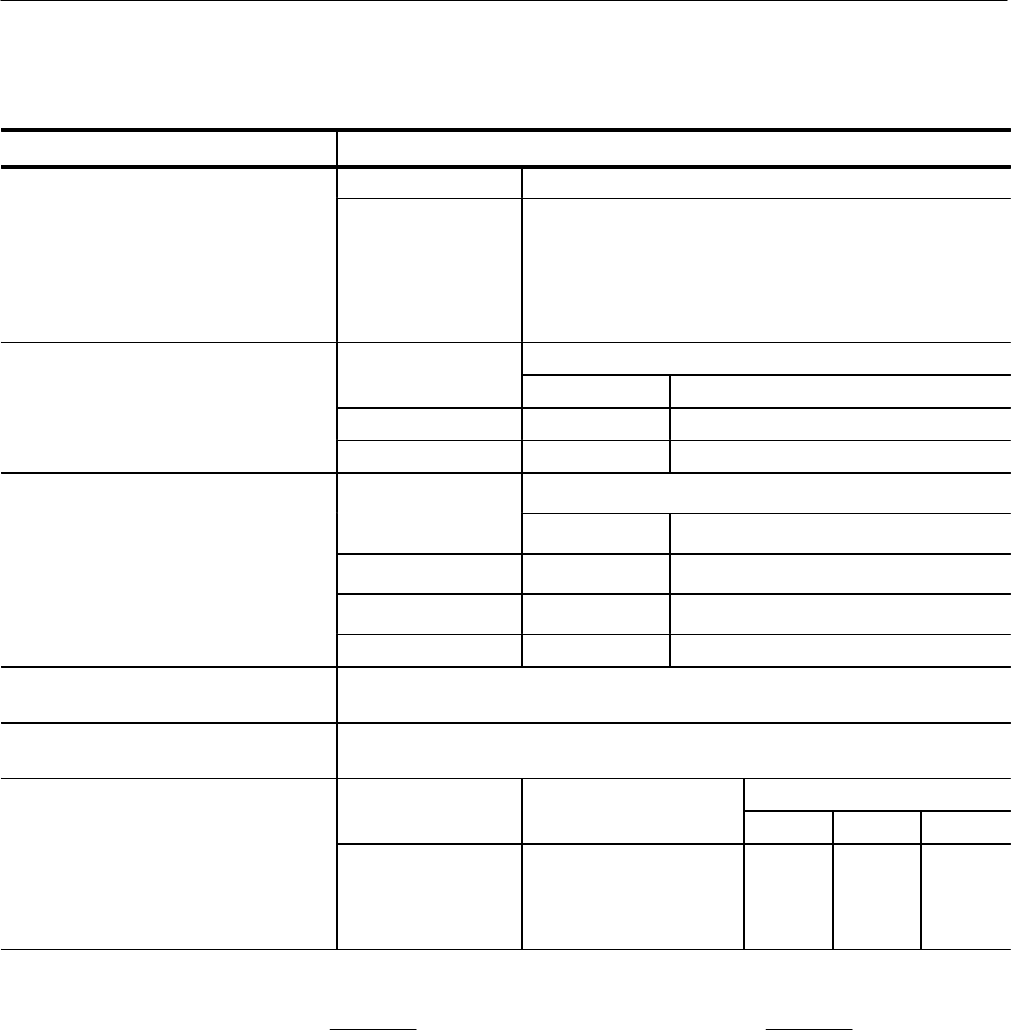
Typical Characteristics
1–22
TDS 684A, TDS 744A, & TDS 784A Service Manual
Table 1–15: Typical Characteristics — Signal Acquisition System (Cont.)
Name Description
Effective Bits — TDS 684A
Input Frequency Effective Bits
Effective Bits — TDS 684A
The chart on the right gives the typical
effective bits for a 9-division p-p sine-wave
input, 50 mV/div, 10 ns/div (5 GS/s), with a
record length of 1000 points:
98 MHz
245 MHz
490 MHz
990 MHz
6.3 bits
6.0 bits
5.5 bits
5.2 bits
Effective Bits — TDS 744A
Sample Rate
Effective Bits — TDS 744A
The chart on the right gives the typical
effective bits for a sine wave adjusted to
2 GS/s 10 MS/s & HiRes
The chart on the right gives the typical
effective bits for a sine wave adjusted to
9.2 divisions at 1 MHz, 50 mV/div @ 25
°
1 MHz – 9.2 divs 6.8 bits 9.7 bits
9.2 divisions at 1 MHz, 50 mV/div @ 25° C
500 MHz 6.8 bits N/A
Effective Bits — TDS 784A
The chart on the right gives the typical
Sample Rate
The chart on the right gives the typical
effective bits for a sine wave adjusted to
4 GS/s 10 MS/s & HiRes
effective bits for a sine wave adjusted to
9.2 divisions at 1 MHz, 50 mV/div @ 25° C
1 MHz – 9.2 divs 6.6 bits 9.7 bits
500 MHz – 8.5 divs 6.6 bits N/A
1 GHz – 6.5 divs 5.5 bits N/A
Frequency Limit, Upper, 250 MHz
Bandwidth Limited
250 MHz
Frequency Limit, Upper, 20 MHz Band-
width Limited
20 MHz
Step Response Settling Errors
Settling Error (%)
2
at
Step Response Settling Errors
±
20 ns 100 ns 20 ms
1 mV/div – 100 mV/div
101 mV/div – 1 V/div
1.01 V/div – 10 V/div
≤2 V
≤20 V
≤200 V
0.5%
1.0%
1.0%
0.2%
0.5%
0.5%
0.1%
0.2%
0.2%
1
The numbers given are valid 0_C to +30_C and will increase as the temperature increases due to the degradation in
bandwidth. Rise time is calculated from the bandwidth. It is defined by the following formula:
Note that if you measure rise time, you must take into account the rise time of the test equipment (signal source, etc.) that
you use to provide the test signal. That is, the measured rise time (RT
m
) is determined by the instrument rise time (RT
i
)
and the rise time of the test signal source (RTgen) according to the following formula:
TDS 684ARise Time (ns) +
450
BW (MHz)
RT
m
2
+ RT
i
2
) RT
gen
2
TDS 7XXA Rise Time (ns) +
400
BW (MHz)
2
The values given are the maximum absolute difference between the value at the end of a specified time interval after the
midlevel crossing of the step and the value one second after the midlevel crossing of the step, expressed as a percentage
of the step amplitude.
